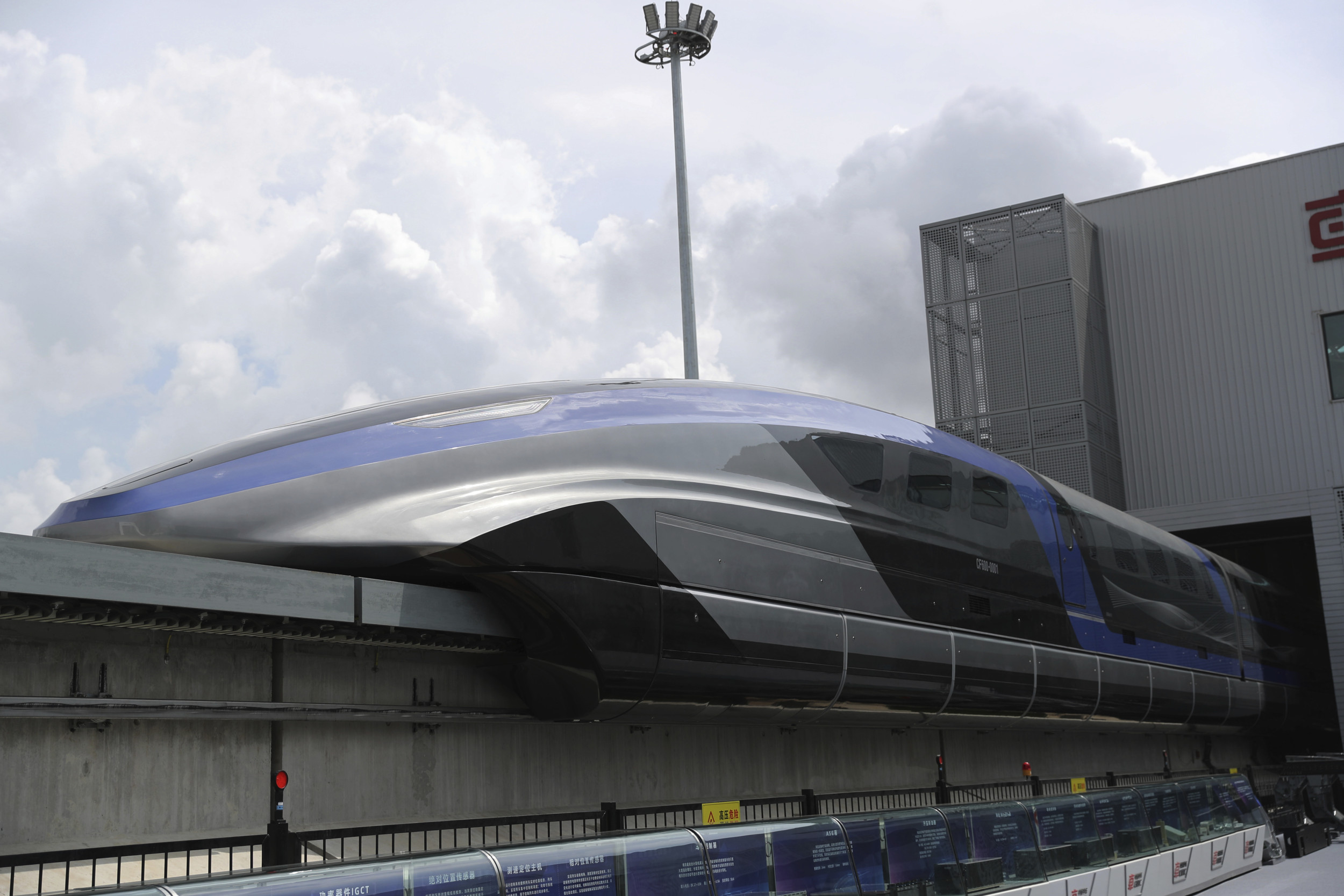World
China tests train that could be fastest in world

China has successfully tested its new ultra-high-speed (UHS) maglev train, which can reach speeds up to 621 mph, making it the fastest train in the world.
The demonstration, carried out in Shanxi Province, marks a significant milestone in China’s efforts to remain the global leader in rail technology. The new maglev, or magnetic levitation, train was tested in a 2-kilometer-long low-vacuum tube in Yanggao County, Datong City.
The technology, developed by the China Aerospace Science and Industry Corporation Limited in partnership with Shanxi Province, floats the train above the tracks using magnetic levitation and places it in a low-pressure tube. That eliminates friction, allowing the train to move much faster than traditional trains.
Zhang Jingang/FeatureChina
It would more than double the top speed of the current operational fastest train in the world, China’s Shanghai Maglev, which can travel at 286 mph.
During the test, the maglev train showed it could navigate accurately, stay stable and stop safely, according to Chinese media outlets CGTN and Xinhua News. The train’s speed and height were exactly as planned, and all systems worked as expected.
The test also proved that it is possible to maintain a large vacuum inside the tube, which is essential for reducing air resistance and achieving high speeds.
Construction of this UHS maglev system started in April 2022. The goal is to integrate space technology with ground transportation to create a train that can travel faster than most commercial airplanes.
The long-term plan is to use this system to connect major cities in China, such as Beijing and Shanghai, reducing travel time between them to about 90 minutes.
This isn’t China’s first foray into maglev technology. In 2021, it unveiled a high-temperature superconducting (HTS) maglev train in Chengdu that could reach 385 mph.
Using maglev technology in low-pressure tunnels resembles the concept of hyperloops, which proposes using air pressure rather than magnets to float pods in low-pressure tubes. The concept of hyperloop technology was popularized by Elon Musk, the CEO of SpaceX, Tesla and X, formerly Twitter.
Musk’s hyperloop projects have faced significant challenges, but China’s latest success shows promising progress.
Since 2008, China has developed the world’s most extensive high-speed rail network, which covers 25,000 miles and links 93 percent of the nation’s cities with populations over 500,000.
The first high-speed rail line, launched in 2008, linked Beijing with Tianjin, just 75 miles away. During the 2008 global financial crisis, China ramped up investments in infrastructure, including high-speed rail, to stimulate the economy and create jobs.
In the U.S., work is progressing on California’s high-speed rail network, which began construction in 2015 after voters agreed to fund it in 2008. The first section is expected to be operational between 2030 and 2033.










